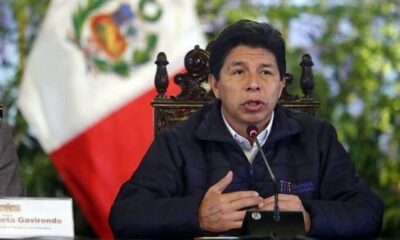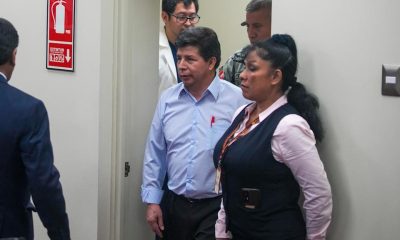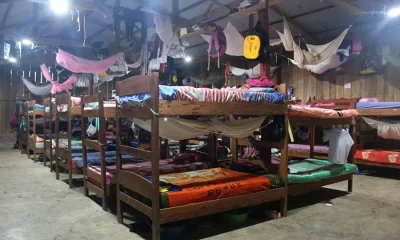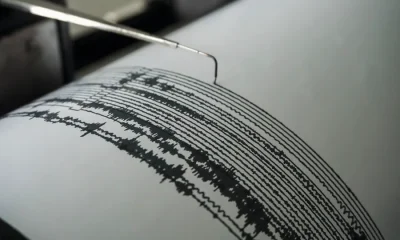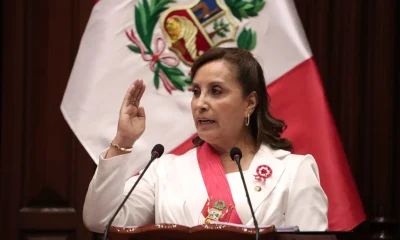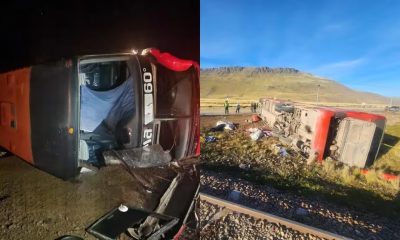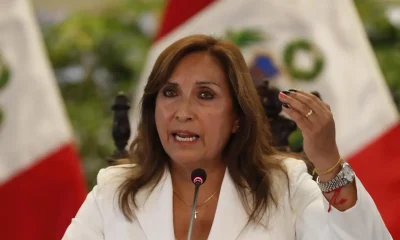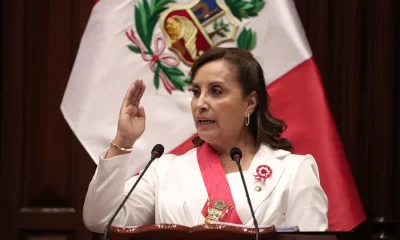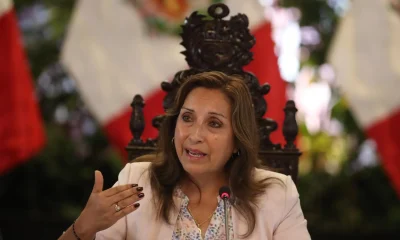International
Peru’s new leader urges calm as protests grow
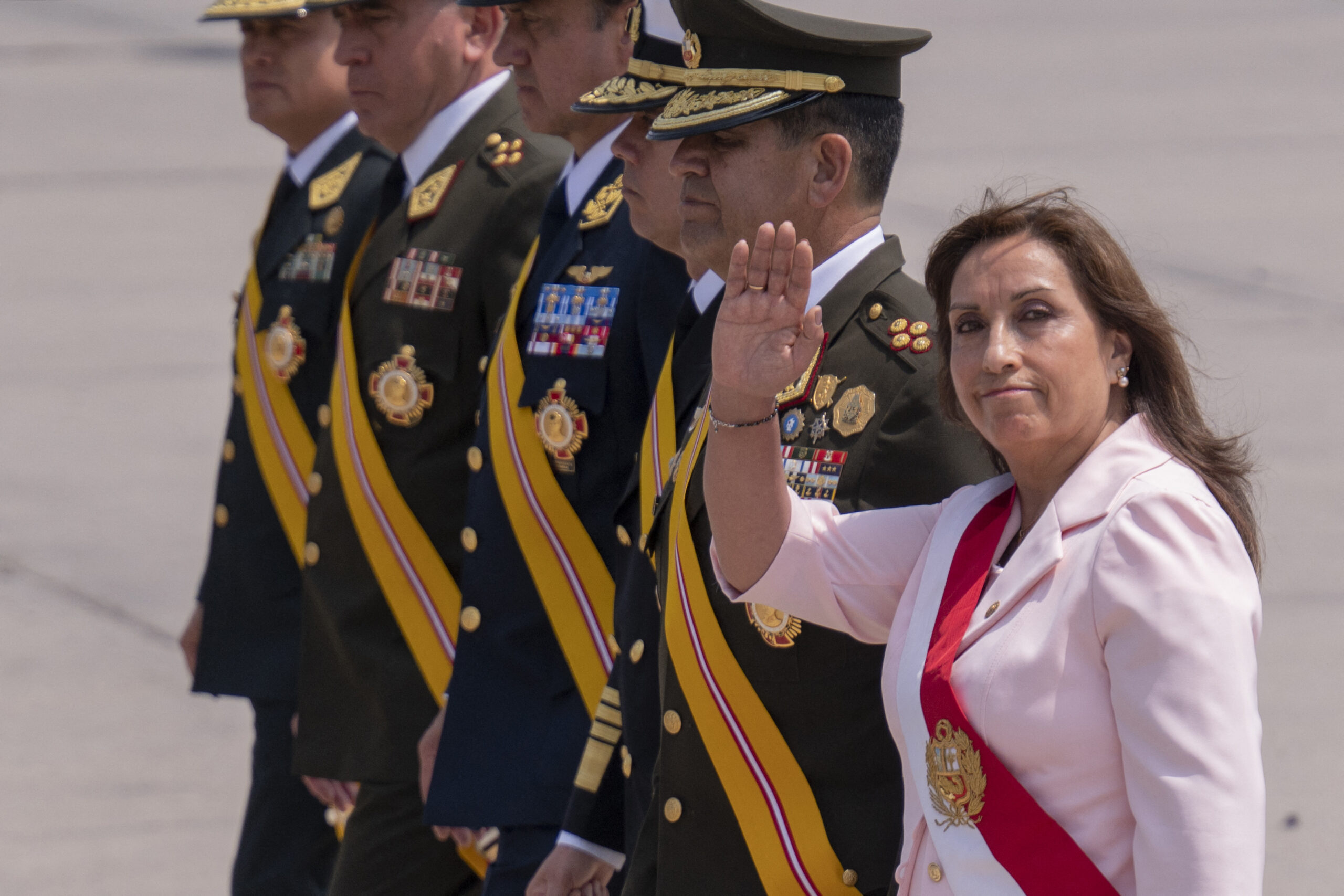
| By AFP |
Peru’s new President Dina Boluarte called for calm Friday as protests mounted after the impeachment and arrest of her predecessor Pedro Castillo, who stands accused of attempting a coup.
Police on Thursday fired tear gas and clashed with hundreds of protesters who demanded Castillo’s release.
Demonstrations continued on Friday, with protesters blocking roads with rocks, logs, and burning tires as they called for early elections.
Boluarte told journalists that if the situation “warrants it,” the government will consult with Congress on holding an early presidential vote.
She urged those “who are coming out in protest … to calm down.”
Peru was plunged into political crisis on Wednesday, when leftist Castillo — facing a third impeachment bid — tried to dissolve Congress and announced plans to rule by decree.
However, lawmakers quickly gathered to vote him out of office, and Castillo was arrested on his way to the embassy of Mexico, which had agreed to give him asylum.
The former rural school teacher, who won a shock election victory over Peru’s traditional elites in June 2021, is being held in provisional detention for seven days while prosecutors investigate charges of “rebellion and conspiracy.”
The charges carry a jail term of between 10 and 20 years.
Boluarte, who served as vice president under Castillo, was hastily sworn in as Peru’s first woman president just hours after the impeachment. She said she would form her government on Saturday.
However, doubt is mounting over her ability to hold onto the job until the end of her mandate in 2026 in a country prone to political instability that is now on its sixth president in six years.
Hundreds of protesters were blocking different sections of the Panamericana Sur highway for a second day on Friday, and further protests and blockades have been called in the capital Lima later in the day.
Protests have also been reported in several towns in Peru’s interior, where poverty is high, and Castillo drew a lot of support for his campaign as a humble man of the people.
Castillo, 53, landed in the crosshairs of the opposition-dominated Congress and prosecutors almost as soon as he took office.
He had six investigations opened against him during his short time as president, ranging from corruption to plagiarizing his thesis and heading a “criminal organization” involving his family and allies.
International
Maduro, Delcy Rodríguez sued in Florida over alleged kidnapping, torture and terrorism

U.S. citizens have revived a lawsuit in Miami against Venezuelan President Nicolás Maduro following his capture, as well as against Vice President and now acting leader Delcy Rodríguez and other senior Chavista officials, whom they accuse of kidnapping, torture, and terrorism.
The plaintiffs — including U.S. citizens who were kidnapped in Venezuela and two minors — filed a motion over the weekend before the U.S. District Court for the Southern District of Florida asking the court to declare the defendants in default for failing to respond to the lawsuit initially filed on August 14, 2025, according to court documents made public on Monday.
The case, assigned to Judge Darrin P. Gayles, accuses the Venezuelan leaders of violating the U.S. Anti-Terrorism Act (ATA), the Florida Anti-Terrorism Act, and the Racketeer Influenced and Corrupt Organizations Act (RICO).
In addition to Maduro and Rodríguez, the lawsuit names Venezuelan Defense Minister Vladimir Padrino López; Attorney General Tarek William Saab; Interior Minister Diosdado Cabello; former Supreme Court Chief Justice Maikel Moreno; and National Assembly President Jorge Rodríguez.
The complaint also lists the state-owned oil company Petróleos de Venezuela (PDVSA) and former Electricity Minister Néstor Reverol as defendants.
According to the filing, Maduro “committed flagrant acts of terrorism against U.S. citizens,” citing the criminal case in New York in which Maduro and his wife, Cilia Flores, appeared in court for the first time on Monday following their arrest on Saturday.
The lawsuit claims that the plaintiffs “were held captive by Maduro” with “illegal material support” from the other defendants, whom it identifies as members of the Cartel of the Suns, a group designated by the United States as a terrorist organization last year.
International
U.S. faces worst flu season in decades as new strain spreads nationwide

The flu continues to take a heavy toll across the United States, with all but four states reporting high or very high levels of activity as a new viral strain known as subclade K continues to spread.
According to another key indicator — doctor visits for fever accompanied by cough or sore throat, common flu symptoms — the U.S. is experiencing its highest level of respiratory illness since at least the 1997–98 flu season, based on data released Monday by the Centers for Disease Control and Prevention (CDC).
“This is definitely a standout year,” said Dr. Caitlin Rivers, an epidemiologist and senior scholar at the Johns Hopkins Center for Health Security. “It’s the worst we’ve seen in at least 20 years. Most of the country is experiencing very high levels of activity, and we are still near the peak.”
Rivers noted that it is unusual to see such a severe flu season following another poor season the previous year, as intense seasons typically do not occur back to back.
Nationwide, approximately 8.2% of doctor visits during the final week of the year were for flu-like symptoms. At the same point last season — which was also severe — that figure stood at 6.7%.
In Massachusetts, where flu activity is reported as very high, health officials urged residents to get vaccinated.
“This is a moment for clarity, urgency, and action,” said Dr. Robbie Goldstein, Commissioner of Public Health, in a press release. “These viruses are serious, dangerous, and potentially deadly. We are seeing critically ill children, families grieving devastating losses, and hospitals under strain due to capacity.”
International
U.S. Energy Secretary to meet oil executives on reviving Venezuela’s crude industry
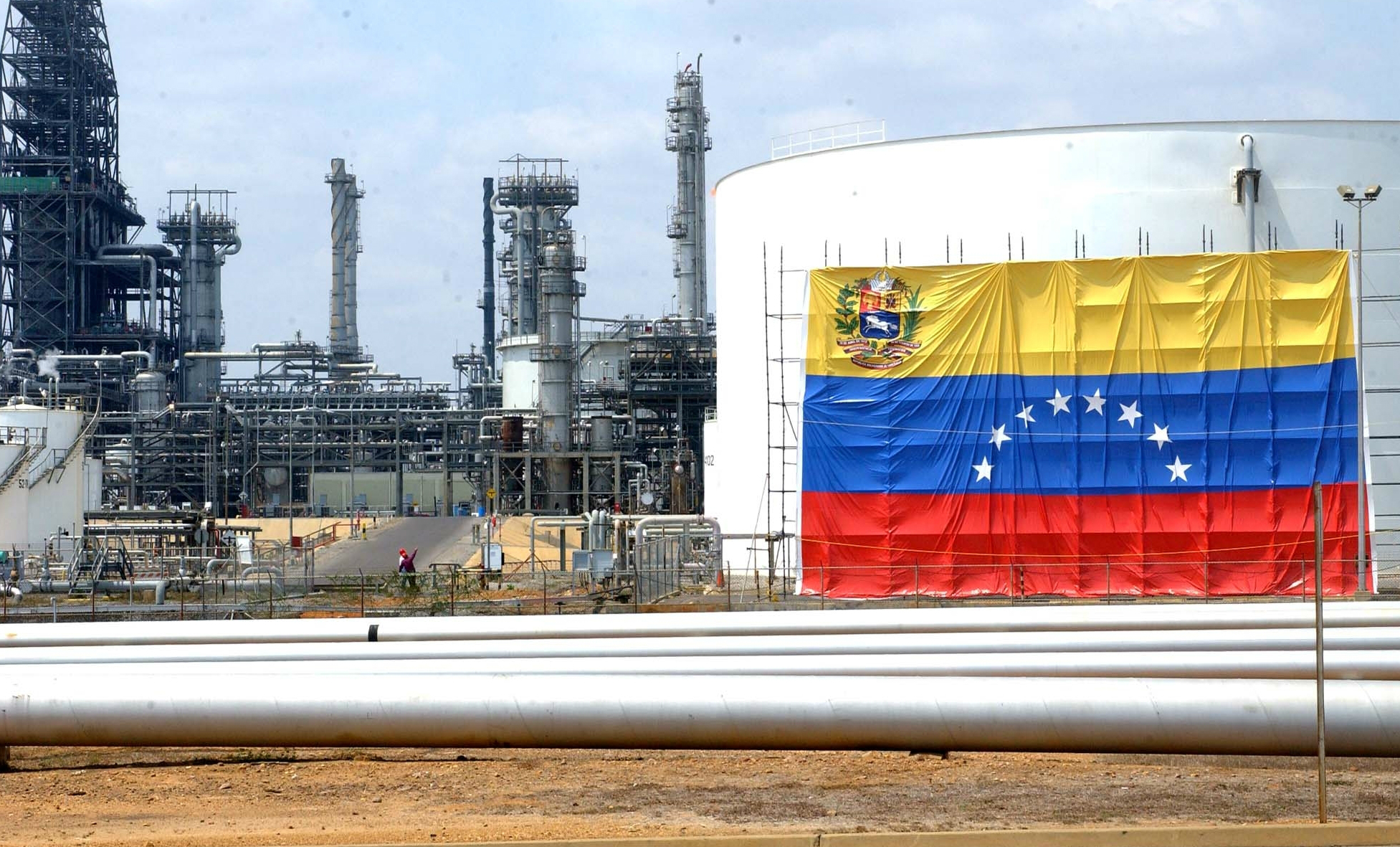
U.S. Secretary of Energy Chris Wright is set to meet this week with executives from the American oil industry to discuss how to revive Venezuela’s crude oil sector, according to multiple media reports.
The meeting will take place on the sidelines of an energy conference organized by investment banking group Goldman Sachs in Miami.
Senior executives from major U.S. oil companies, including Chevron and ConocoPhillips, are expected to attend the symposium.
Venezuela holds the world’s largest proven oil reserves, estimated at 300 to 303 billion barrels, representing roughly one-fifth of known global reserves.
Following the controversial operation carried out on Saturday to detain Venezuelan President Nicolás Maduro, U.S. President Donald Trump has placed renewed emphasis on control over and exploitation of Venezuela’s vast oil resources.
-

 International1 day ago
International1 day agoU.S. faces worst flu season in decades as new strain spreads nationwide
-

 International5 days ago
International5 days agoMissile attack hits Kharkiv homes, leaving 13 wounded
-
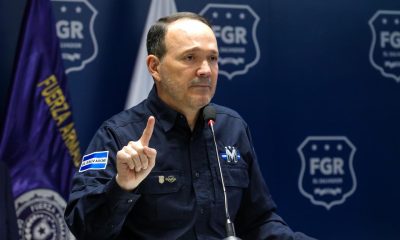
 Central America2 days ago
Central America2 days agoEl Salvador reports safest year in its history, security cabinet says
-
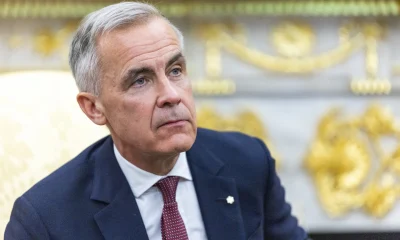
 International5 days ago
International5 days agoCanada’s prime minister Mark Carney to join Ukraine peace talks in Paris
-

 International4 days ago
International4 days agoTrump signals possible expansion of U.S. regional policy beyond Venezuela
-
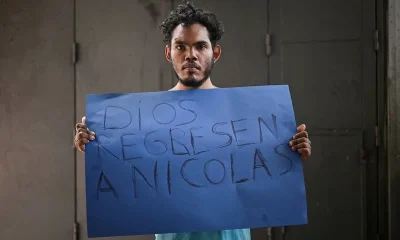
 International4 days ago
International4 days agoWorld leaders react to U.S. attacks on Venezuela, sparking global divide
-
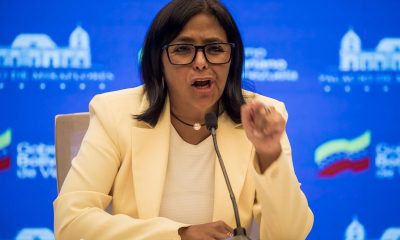
 International2 days ago
International2 days agoDelcy Rodríguez, key figure in U.S.-Venezuela transition, remains under EU sanctions
-

 International1 day ago
International1 day agoMaduro, Delcy Rodríguez sued in Florida over alleged kidnapping, torture and terrorism
-
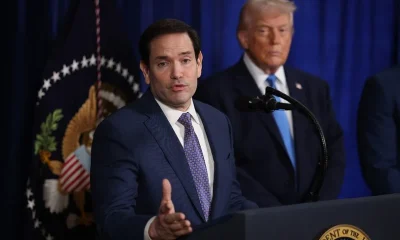
 International3 days ago
International3 days agoMarco Rubio warns Cuba could be Trump administration’s next target
-

 International2 days ago
International2 days agoChina urges immediate release of Maduro, seeks emergency UN security council meeting
-
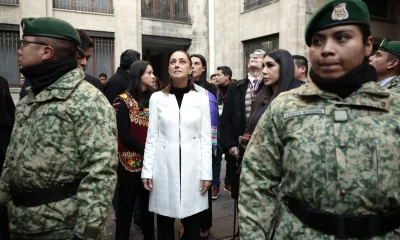
 International5 days ago
International5 days agoSheinbaum evacuates National Palace after 6.5-magnitude earthquake hits Southern Mexico
-
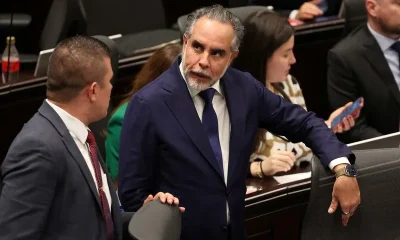
 International1 day ago
International1 day agoColombia to maintain anti-drug cooperation with U.S. after Trump remarks
-
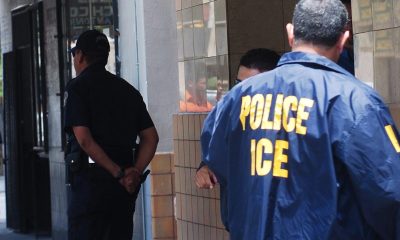
 International1 day ago
International1 day agoFlorida’s ‘Tidal Wave’ operation detains 10,400 migrants in largest ICE joint effort
-
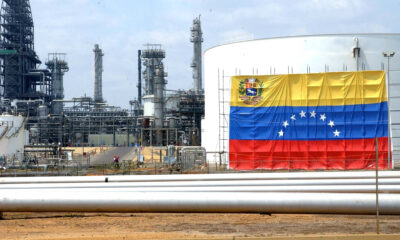
 International1 day ago
International1 day agoU.S. Energy Secretary to meet oil executives on reviving Venezuela’s crude industry
-
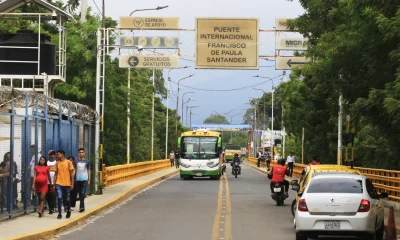
 International1 day ago
International1 day agoColombia says border with Venezuela remains calm after U.S. arrest of Maduro























